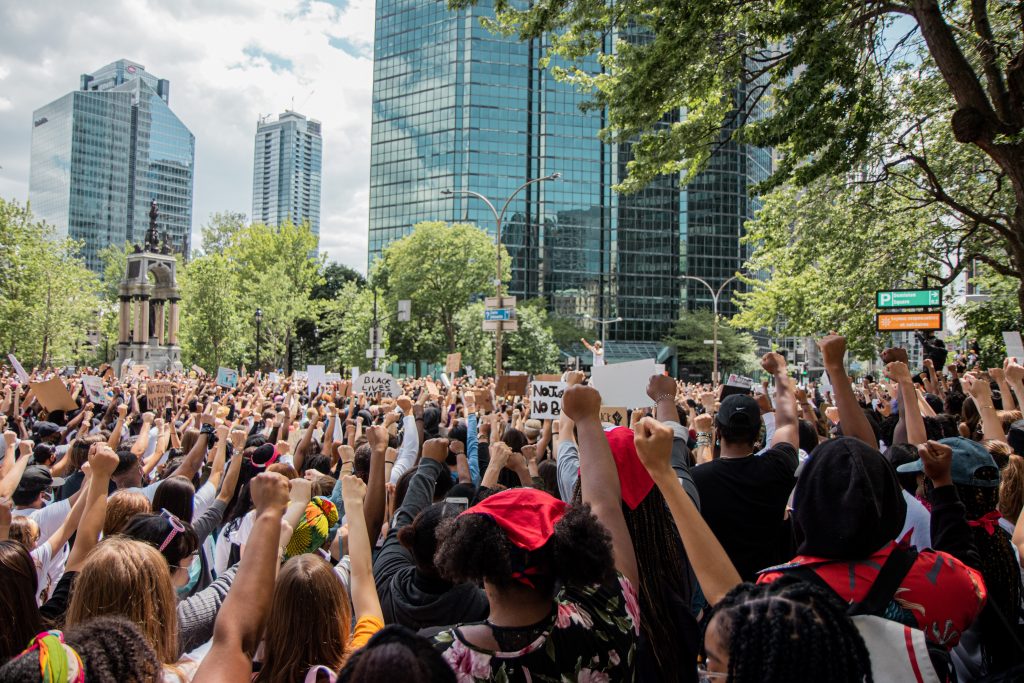Last summer, the murder of George Floyd sparked a series of protests, attracting crowds of about 26 million people and making the Black Lives Matter (BLM) movement probably the largest social movement in the history of the U.S.
But the BLM movement had a history before the summer of 2020. The movement became nationally known after a police shooting incident caused the death of Michael Brown, an 18-year-old teenager in Ferguson, Mo., in August 2014. Brown’s death caused social unrest and led to demonstrations by the crowd that lasted several months. It sparked a national dialogue about police brutality and institutionalized racism.
So how did a spontaneous moment turn into the largest social movement in history? Ravi S. Kudesia, assistant professor of human resource management at the Fox School, explains that eventual social movement strategy can emerge from spontaneous acts of anger in protest crowds. His research, Emergent Strategy from Spontaneous Anger: Crowd Dynamics in the First 48 Hours of the Ferguson Shooting, provides a minute-by-minute analysis of the Ferguson shooting and uses it as an example to challenge pre-existing notions about crowds and strategy.
Kudesia, who attended several of the Ferguson protests, wanted to make sense of the shooting through empirical research instead of accepting common political talking points. He identifies three important periods that were crucial in shaping his research with acts of anger preceding all three. People were angry about the uncertainty around the shooting, the police handling of the crime scene and the press conference at the Ferguson police station.
The Ferguson protests challenged the idea that crowds are not capable of acting strategically in ways that spark a lasting a strategic movement. “What happened in the first 48 hours of Ferguson was not isolated and local. It instead instantiated broader strategies and organizing structures that all interacted with each other: police organizing around standard operating procedures, civil rights organizations organizing under hierarchical authority, and young protest crowds organizing around acts of anger,” Kudesia explains.
After Brown was shot on August 9, 2014, confrontations between the crowd and police lasted several months, even after the National Guard was deployed to quell protest crowds. “A lot of the gestures in the October (2014) protests were similar to what people were doing hours after the shooting. It showed that elements of what became a formal social movement by October were present, even in the first 48 hours in August.”
Kudesia’s research largely explains how anger expressed in protest crowds during the immediate aftermath of the shooting emerged in the strategy of the social movement in Ferguson.
But anger, in many instances, can be destructive. Kudesia says, “To say that acts of anger in crowds were strategic in this specific case is not to overlook that crowds can, and often do, act in ways that undermine social progress or that anger can be more destructive than strategic.”
If strategy does emerge from spontaneous events, how does that impact the field? In other words, what can business strategy glean from research about social movements?
Traditionally in the business world, almost every organization follows a strategy that is carefully planned, has a clear set of objectives and is executed from the top-down level, from manager to employee.
But Kudesia argues that a lot of corporate decisions can actually be motivated by emotions like anger and frustration, like cases of an organization going out of business or a spin-off emerging. He says, “It’s like you’re angry or frustrated with something and then when you feel that there’s got to be a better way; that feeling can generate a new product idea.”
This does not mean, however, that people should start yelling at each other as a way to achieve objectives; rather we should understand that anger has functional uses that are strategic in nature.
What happened in Ferguson wasn’t the result of a single period, action or actor. The research shows that strategy emerged from the “path-dependent actions of the crowd as a collective.” The study reignites the belief that micro actions against injustice sometimes lead to macro strategic outcomes, through a “wisdom of the crowd” effect.
“The Ferguson case is a very substantial departure from how we’ve typically thought about strategy,” Kudesia says. “It isn’t that protest crowds are always strategic or that anger is always strategic, but this is an existence proof that if it happened here, it could happen elsewhere.”
